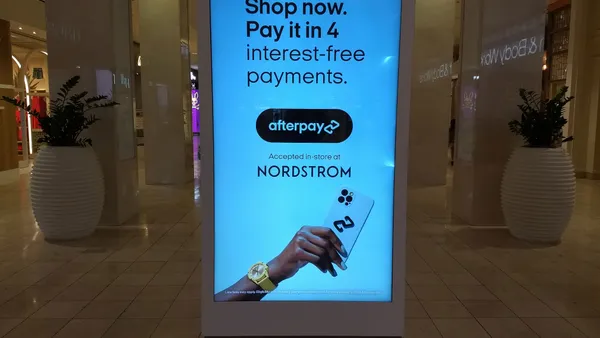The world of payments is based, for most customers, on the use of their credit card. As long as a customer stays within their credit limit and makes payments on time, the process is generally smooth, predictable, and without friction.
Until it’s not.
In recent years, the Buy Now Pay Later (BNPL) approach has become more and more popular.
It appeals to customers for one key reason:
Assuming you are not creating a non-stop cycle of catch-up with frequent purchases, spreading out payments over time is an enticing way to be able to make a purchase today, even if you can't take the immediate hit to your bank account.
Moreover, if a customer hits their credit limit, or would with a purchase and are not permitted by their bank to make that purchase, it becomes a choice of last resort. In that case, making smaller payments over the course of a few months, generally without interest or surcharges, becomes a particularly appealing workaround.
Could calling the bank and asking for a temporary or permanent adjustment to credit limits work? It sure could — but most consumers don't. It's a hassle, sometimes requires paperwork to justify the request, and often an algorithm simply decides that the request is not worthy.
Fintech companies offering BNPL (as well as merchants who manage it on their own) understand that credit limits are not always up to date or truly represent an ability to pay over time; it’s an abstract figure based on a few factors.
The result: Transactions that fail the litmus test employed by card issuers find their way over to the BNPL providers — where the transaction does go through.
The question is, why would the BNPL provider take such a risk when the bank would not?
A secret weapon for assessing risk
While both banks and BNPL companies are interested in keeping customers, the banks need to be more conservative for one fundamental reason: they don't know anywhere near as much about the transaction as the BNPL provider does. Specifically, a BNPL provider is integrated with the merchant (or is the merchant) and therefore knows, at the very least, what the product is.
There are certain product categories (home improvements, vehicles, vacations) that are statistically lower risk. There are also shopping patterns (extensive comparison of items, ongoing large purchases, luxury items) that the BNPL provider may be privy to for a particular customer. This allows them to make decisions on a case-by-case basis, leveraging this additional background information to more accurately assess the risk of a customer's failure to repay.
The factors accelerating BNPL adoption
Credit card issuers have mechanisms in place to protect themselves from transactions they classify as high-risk — and they are certainly justified in doing so. The intention is certainly not to embarrass or frustrate the customer with a declined transaction; doing this too many times will not only eliminate the revenue from the specific transaction, but can potentially push the customer to another credit card for good.
Due to the massive quantity and pace of transaction requests arriving from around the world, analysis and accept/decline decisions must be executed automatically and algorithmically. The system has to be somewhat conservative and will take the best guess at where to draw the line between accepting and declining the transaction.
So let's take a look at three reasons why legitimate transactions may be rejected by issuers:
Bank Policy
Each bank may have its own preference — based on best practice, its own pattern analysis, or actuarial risk calculations — for specific types of transactions. Even without a complex algorithm, certain red flags can trigger a decline. Some banks become suspicious when a purchase is made in distant locations, and some take extra precautions for purchases over a large amount, even if it is within the customer's credit limit.
These red flags are unique to each bank and are not made public — as a result, there can be a surprise when a customer suffers the repercussions of raising one.
Insufficient funds
If we consider a credit card purchase as essentially a short-term loan, we understand that the bank has the right to run a “credit check.” and since they have access to the balance of a bank account, it's easy enough for them to determine the risk of default on a particular payment.
But it’s not that simple.
Using a credit limit or snapshot of today's balance does not take into account that the customer may have other sources of funds like an expected bonus, a loan from a relative, a sale of stock, or even simply the readiness to pay the interest on payment over a few months. The customer may even have bonds to sell, an inheritance, or funds stored in a savings account in another bank.
Often, unusual purchases are needed in order to fund major life events like a birth, wedding, purchase of a new home, and more. The customer often has a plan to repay the outlay but the bank has no way to know.
It’s not to be forgotten that the merchant may have plenty of supporting data to indicate that they are dealing with a reliable customer who pays their bills regularly. But the bank does not have this information; their perspective is restricted to the dollar amount of a transaction.
Fraud
It's never a pleasant feeling being told by a bank that they simply don't trust you. It's hard not to take it personally, but the reality is that it is frequently a kind of benign fluke: there is a mismatch between shipping and billing addresses, a device ID is unfamiliar, certain types of products are being ordered in bulk or from distant locations, etc.
Accept for a moment that fraud systems deployed by credit card issuers do need to be conservative and determine how significant the red flags are; the problem is that they do not have all that much data to work with — they only access purchase history on their own card. They don't know about a customer's reliability using other cards or consistent purchases through a (or any other) merchant. They don't even know if a particular purchase is unusually large for a particular customer, except by comparing it to other purchases made using this card in particular.
In the event that the customer pulls out a competitor’s card and the transaction does go through due to a more relaxed set of algorithmic rules, the original credit card issuer may lose that client and associated revenues.
Advantages of BNPL for merchants
Similar to issuers, merchants put into place layers of fraud prevention solutions to minimize the risk of accepting fraudulent transactions – purchases for which they will often be stuck with the bill in the form of a chargeback. By shifting the customer payment from themselves to the BNPL provider, merchants offload the risk of fraud to the loan provider. So, not only does enabling customers to use BNPL options increase the likelihood that credit will be extended and their purchase authorized, the revenue generated by these transactions makes it to the merchant's bottom line and stays there.
That said, even if merchants don’t end up paying directly for fraud perpetrated through BNPL payment channels, it is something they are going to want to actively prevent. Customers aren’t necessarily going to distinguish whether their card was fraudulently used at a merchant’s online store because of a hole in the BNPL’s defenses or the merchant’s anti-fraud systems. The reputation damage caused by fraud is likely to stick to the merchant and reduce customer lifetime value.
Doubling down on fraud prevention
While it’s difficult to influence the factors of bank policy and insufficient funds, fraud is a prime opportunity for merchants to prove legitimate transactions or flag suspicious ones to help themselves and their customers.
Pre-purchase fraud solutions can keep the bad actors out, so that the payments traffic that a merchant sends for authorization to issuers is more likely to be approved. But what about transactions that come through as friendly fraud chargeback disputes?
This is a growing problem for both merchants and especially BNPL providers. According to a consumer survey conducted by Justt last year, 19 percent of Americans who made BNPL payments had filed a chargeback within the past 12 months.
Post-purchase friendly fraud and first-party misuse require purpose-built solutions that can tackle chargeback problems head on.
Review our guide on choosing the chargeback solution to understand when to go in house vs. outsource, available third-party tools and other key takeaways for finding a solution that works for your business.










